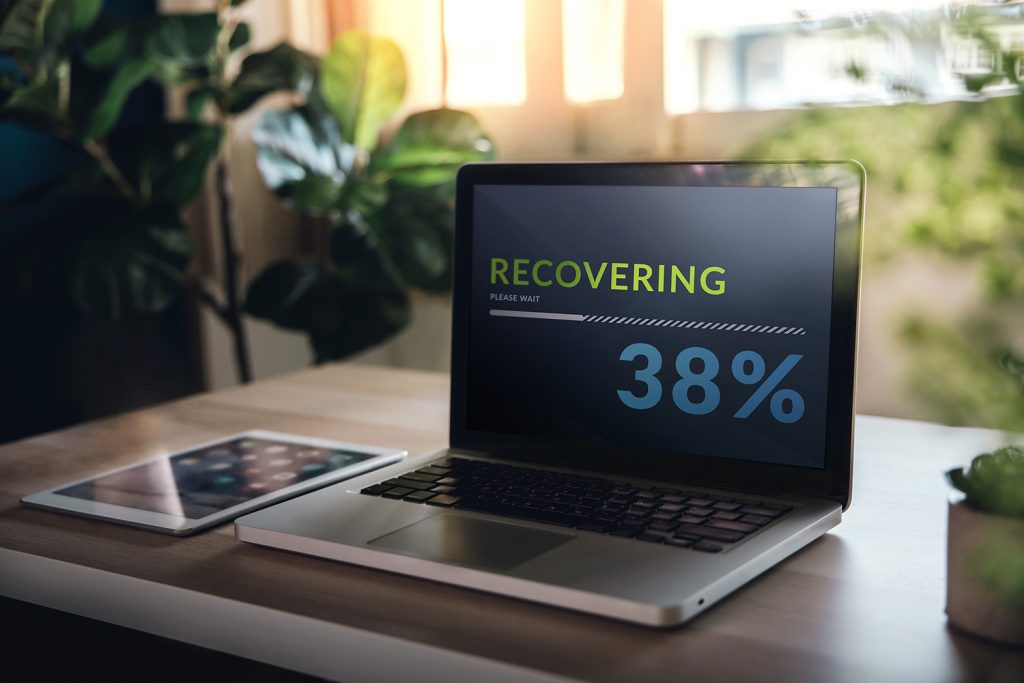Introduction
No matter how careful you are, how thoroughly you plan ahead, problems always arise. Your data may be safely stored on the servers of a leading technology provider, but the smallest spark could lead to a major fire that damages equipment and hardware beyond repair. Thankfully, there is a solution — if you have a disaster management plan in place, which includes regular backups being made to remote servers, your data will remain secure and accessible, even when disaster strikes.
In today’s technology-driven world, data loss or breaches can severely damage the daily operations, productivity, and revenue of a business. It can also irreversibly impact a customer’s trust, particularly if their information is compromised. Disasters can occur without warning, and it is essential to be prepared by making use of disaster recovery (DR) services from a reputed service provider like Solid Systems.
What is Disaster Recovery?
Disaster recovery (DR) is the restoration of an entire IT system, consisting of hardware, cloud servers, virtual machines, applications, databases, and more. To prepare for unforeseen problems, backups of critical data and applications are stored on cloud servers so that, should a failure occur, the whole system can be restored quickly, ensuring that business operations can continue uninterrupted.
Even simply storing your data in the cloud in case of hardware malfunctions is not fool proof, however, as cloud computing disasters can occur for a variety of reasons, including power and Internet outages, cyberattacks, and data breaches. This makes putting together a cloud disaster recovery plan essential for any business, as they can include tools for prevention, preparedness, response, and recovery measures in the event of a crisis. A strategic recovery plan will also often detail measures for storing multiple copies of your data across geographic locations.
What Are The Important Aspects Of A Disaster Recovery Plan?
Your Disaster Recovery Plan is likely to be multi-faceted, covering different business operations and including a number of different humans from a range of departments. But here are three main factors that you should bear in mind when putting your plan together:
While the idea of constantly backing up your data to multiple locations may sound like a perfect solution, in reality it would put unnecessary strain on your hardware, and cost the earth! When it comes down to it, most companies opt to perform backups on a weekly or monthly basis, and this is where Recovery Point Objectives (RPOs) come in. The RPO is the time gap between a data disaster and the last usable data backup that is stored. RPO is also referred to as a company’s ‘data loss tolerance’, meaning the amount of data that you can afford to lose before the damage is considered ‘significant’. While the data recovery process generally preserves data changes made right before the data failure, RPO is used to determine the frequency of data backup, and the tolerance of data loss that your business might need.
While some data losses wouldn’t affect the day-to-day operations of your business, others could take a heavy toll if they take too long to recover. This is what makes Recovery Time Objects (RTOs) important. An RTO is the amount of time that a business can function without a particular application before it incurs a significant loss, and is used as the basis for determining which applications to restore as a matter of priority, and how long a full restore should take. RTO can be measured in seconds or may take a longer duration depending on the size of a backup and the priority of the applications affected by the data failure.
Business Critical Applications are those which, if compromised, could result in serious damage in terms of productivity, finances, legal terms, customer dissatisfaction, reliability, and other such critical areas. These applications need to keep running to ensure optimum productivity and, should a data disaster occur, they are the first that need to be restored to avoid a serious loss.
Don’t let a data disaster destroy your company
Invest in backup and recovery solutions that will keep your business running uninterrupted.
What is a Disaster Recovery Plan?
A Disaster Recovery (DR) Plan is a detailed breakdown of what should happen if your data becomes compromised. It includes steps that an IT team must take to recover all data and applications after a problem occurs, as well as steps that should be taken to ensure that data is backed up and securely stored beforehand.
A premium DR service provider like Solid Systems will work with you to create an effective IT disaster recovery plan (DR Plan), ensuring that your company’s data is safe even when unexpected data disasters arise. A DR plan could, for example, involve your data being stored at a secondary site, also called DR site, so that it can be rapidly restored should a data disaster strike. This would mean that, should the unimaginable occur, your business operations can continue without a hitch,minimising the overall impact on your company’s performance.
Benefits of Having A Disaster Recovery Planning
Having a strategic DR plan and a DR backup team at hand to step in when disaster strikes is hugely beneficial to any company. Here are just a few reasons why:

Increased Customer Retention
Customer experience is a core aspect of any business. The better the experience, the better the chances of client retention. But today’s customers are also extremely demanding and often quick to jump ship. If they experience downtime or learn of data failing or being compromised, they could quickly shift to another service provider. With a DR Plan in place, glitches don’t need to affect your business operations, and your customers can expect the same quality of service, often without even being aware that a problem has occurred.

Reduced Data Restoring Times with Lesser RTO and RPO
A step-by-step DR Plan will ensure that all your data and applications are restored as quickly as possible should a problem arise. This means that your RPO and RTO can be significantly reduced, priority can be given to applications that are essential for the running of your business, and your data loss, if any is experienced, will be minimal, as will the expenses involved.

Knowledge of Your IT Needs and Preparedness for Future
A comprehensive DR plan helps you ensure business productivity and security by mitigating disruption, both short term, and long term. While Solid Systems’ IT team works to analyse causes of disruption and strategise a DR Plan to suit your business’ needs, they also plan how to prevent such events in the future. In the process, you will get to know all the essential aspects of IT security to ensure that your business operations continue uninterrupted.
Put Disaster Recovery In Place
ABOUT SOLID SYSTEMS
With almost 18 years of experience, Solid Systems offer premium and customised cloud and disaster recovery solutions. Our Disaster Recovery as a Service (DRaaS) solutios, including Azure Site Recovery services, are extensive and involve deploy replication, failover, and data recovery. We’re just a click away, so don’t hesitate to contact us.
Since 2003, we have specialised in delivering leading technology solutions and offering guidance to organisations in South Africa and abroad, in the most human way possible.
We love technology and the exciting ways that it evolves, and are constantly improving the tools that we use. But humans are at the heart of our business. That’s why we value each relationship and prioritise a personal approach, finding solutions that deliver results for your company in the best way possible.
With our highly skilled and passionate professionals behind us, and the latest and most sophisticated tools at their disposal, we ensure that the businesses we work with are constantly evolving, and can step into the future with confidence
Related Blogs
Unlocking the Benefits of Managed IT Solutions for Your Business
The Future of IT Outsourcing: Navigating Your Way to Success
10 Business Resolutions That You Should Make In The New Year
Difference Between Spam, Phishing, Spear Phishing & Whaling Phishing
Prepare Your Business For These Online Shopping Security Threats
6 Risk Mitigation Strategies That Any Business Can Benefit From
From Loss to Recovery: The Advantages of Disaster Recovery Plan
Fast Learning One Drive Protect & Microsoft’s Multi-Factor Authentication
Popular Searches
- Managed Services
- Azure VM Service
- Email Security Services
- IT Outsourcing Companies
- Azure Backup Service
- O365 Advanced Threat Protection
- Cloud Solutions
- SharePoint Microsoft 365
- Cloud Backup As A Service
- Microsoft Office 365 South Africa
- IT Companies in Gauteng
- Microsoft Surface
- IT Services Providers
- Cloud Storage Services
- IT Companies in Johannesburg
- OneDrive For Business
- IT Support Cape Town
- Cyber Security Companies
- IT Consulting Companies
- IT Solutions Company
- IT Security
- IT Companies in Cape Town
- Microsoft Teams






























